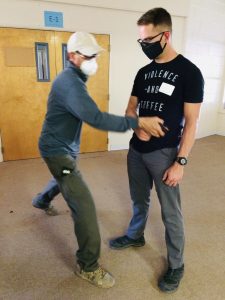Violence Avoidance and Survival

Home invasions became popular in the 1990s. Now even spree killers are targeting people in their homes; witness the Nova Scotia killer’s arson and shooting rampage.
This course is NOT just about Active Shooters. We will give you unarmed skills you can use to survive any type of lethal encounter, and crime prevention strategies so you can avoid being targeted for violence before it happens.
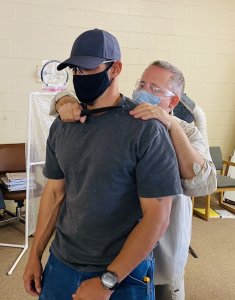
Survival in an active killer situation, or any violent encounter, is much more likely with prior, realistic training. We can teach you how to lead your peers to survival in such toxic environments. The curriculum is multidisciplinary and, when possible, hands-on. It includes protocols for avoiding crime when alone in a parking lot, or in your home, as well as in crowds.
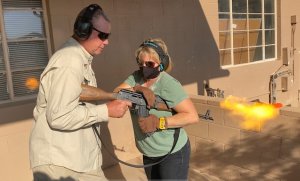
This 6 – 7 hour class is offered as a FREE public service to students, teachers, public safety personnel, healthcare workers, military, and their families, as well as under-served communities. Pre-registration is required. All students are encouraged to donate an old, out of date fire extinguisher if they want to practice using one as a distraction device, but a fire extinguisher is NOT required. This class will run most of the day, from 9 am till at least 4 pm, with a break for lunch.
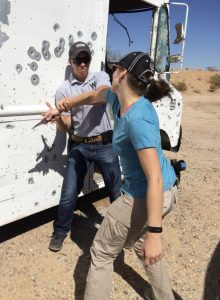
Typical VAS Outline
You will need to come with a training partner you don’t mind risking COVID with to practice the off-lines and disarms
Block 1 – Identifying, Understanding, and Preventing Violence
- Social vs. Asocial violence
- Types of violence that can occur at school or church: the continuum from individual threats to sieges
- Instrumental versus intentional use of weapons, and appropriate responses to each
- The OODA / PADE cycle
- Shock thresholds
- Group dynamics in crisis situations
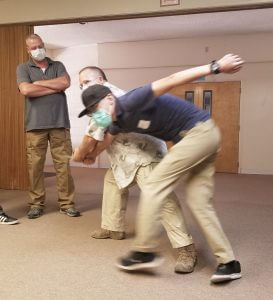
Block 2 – Weapons
- Advantages and limitations of different weapon types (purpose-built or “field expedient”)
- Off-lines and disarms using inert simulators
- Improvising weapons from the environment
And the winner for best improvised weapon of 2019 is:
Lukasz, 5-foot narwhal tusk!
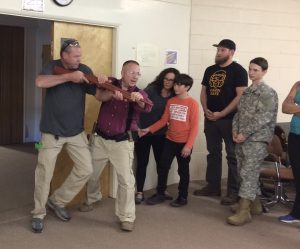 Most of Blocks 2, 3, and 4 (and even some of Block 1) have involve hands-on practice. Most people agree: they would rather disarm an emotionally disturbed person, if possible, than watch him or her be shot by SWAT over the maimed and dying bodies of their peers. All participants will wear masks, and must bring a loved one or roommate they share their personal space with, as a training partner for the off-lines and disarms. The methods we teach for this are simple and (perhaps surprisingly) effective. They do, however, depend on proxemics (distance) and micro-terrain (such as the flow of doors). Students will be encouraged to not wait around to disarm someone if escape is possible (see Block 4 below).
Most of Blocks 2, 3, and 4 (and even some of Block 1) have involve hands-on practice. Most people agree: they would rather disarm an emotionally disturbed person, if possible, than watch him or her be shot by SWAT over the maimed and dying bodies of their peers. All participants will wear masks, and must bring a loved one or roommate they share their personal space with, as a training partner for the off-lines and disarms. The methods we teach for this are simple and (perhaps surprisingly) effective. They do, however, depend on proxemics (distance) and micro-terrain (such as the flow of doors). Students will be encouraged to not wait around to disarm someone if escape is possible (see Block 4 below).
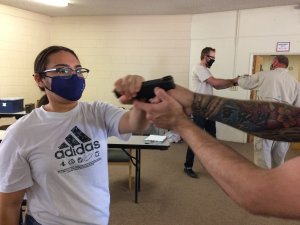
Block 3 – Home Invasion, Carjacking, Kidnapping, and Other Crimes Against the Person
- Staying “left of bang”: what the acronym PESTSS means, and how to put up “the fence”
- How to look for mission focus, target focus, and the “number of whites” in a potential assailant’s eyes
- Practice creatiing a “shooter’s dilemma” with an L formation
- The civilian ambush paradigm
- Burglary vs home invasion
- Carjacking and kidnapping scenario practice

In this block, we will teach you ways to avoid becoming targeted individually for violence. You will learn simple, effective strategies to prevent being selected as a victim. You will practice what to do if you are.
Block 4 – Potential Responses to Active Shooters and Other Rampage Killers
Social Proof: the necessity for leadership in crises
Calming peers by giving them missions
Essential roles and how to delegate them

Effectiveness / ineffectiveness of various escape movement techniques
Danger area crossings
Advantages and disadvantages of improvised barricades
Using doors, walls, and spaces to your advantage against a rampage killer
How to use fire extinguishers as both dry chemical dispensers and impact tools against a manikin (when and where logistically feasible, this training will include “live fire” practice with actual extinguishers)
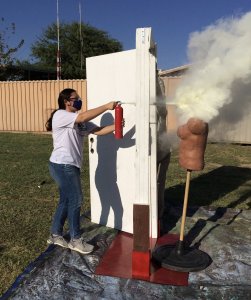
Means of immobilizing a subdued assailant
What to expect when professional emergency responders arrive
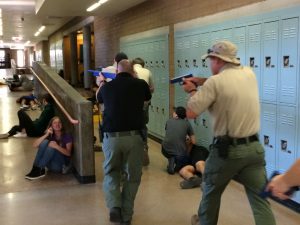
Transitioning to law enforcement control of the scene (how not to get shot by the good guys)
We can show you how to practice responses to a variety of potential scenarios with hands-on drills you can practice when you return home. We will also simulate the sights, sounds, and smells of a home invasion or other violent event, so when it happens to you, it won’t be your “first” time.
